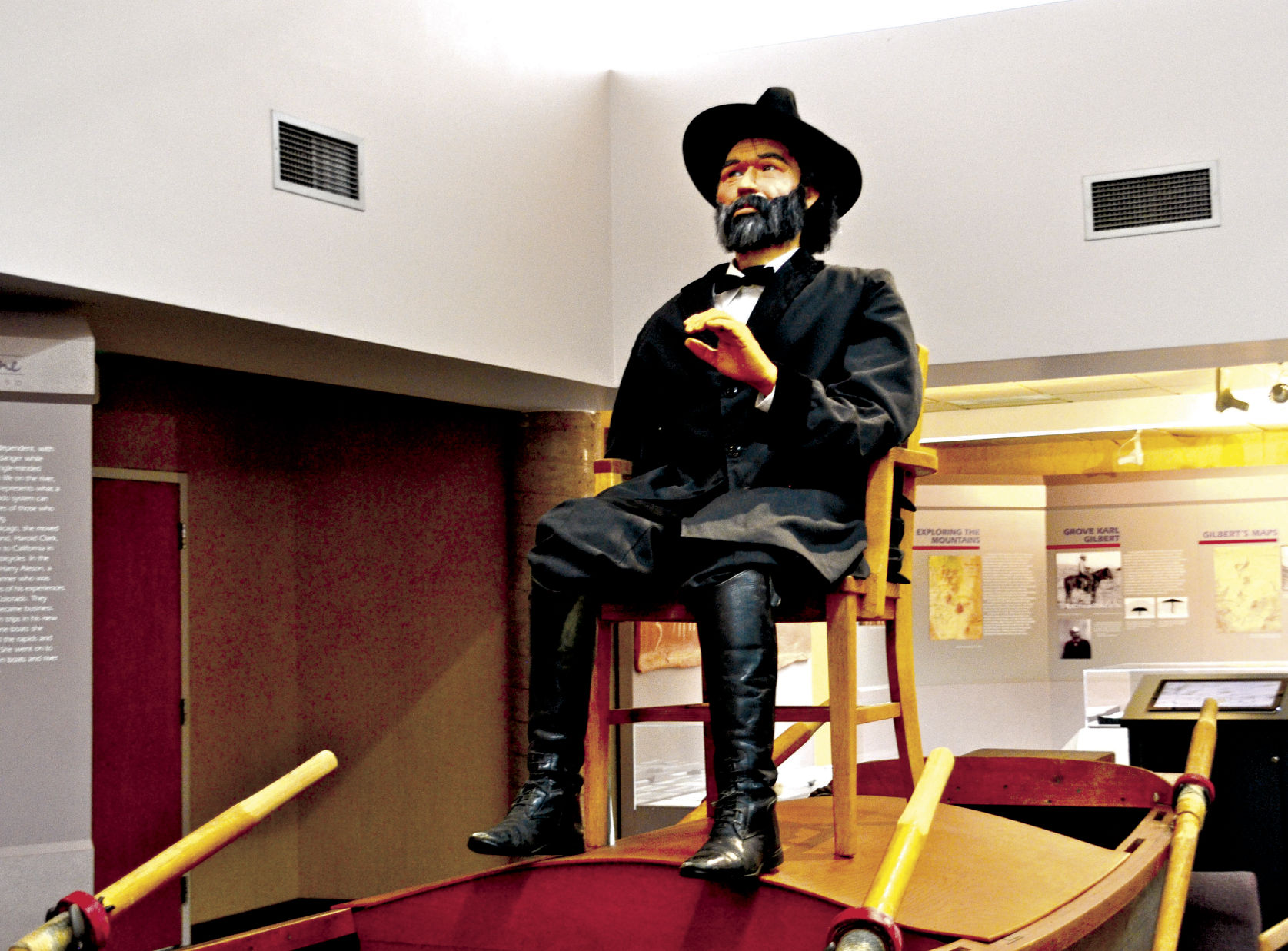TRAVELS THROUGH THE GREAT UNKNOWN
In May of 1869 John Wesley Powell, with a crew of nine men, set off from Green River, Wyoming on a journey like no one had ever attempted before. It is apt to say the group descended, “Into the great unknown.”
In the documentary “River Runners of the Grand Canyon” (a film by Don Briggs), the narrator says, “The boats were too heavy and about as nimble as barges. There weren’t enough provisions to start with and they lost half of what they had. The crew didn’t know what they were getting into and even if they had, they wouldn’t have known what to do about it. In truth, the wonder isn’t that they succeeded, but that they survived at all.”
But they did, and Powell became famous. The mission was to float the entire length of the Green and Colorado rivers and document what they saw. At the time it was only segment of what came to be the United States that was still unexplored.
There are reasons it was unexplored. There were few crossings and there were sections of river that ran hundreds of miles through canyons that were inaccessible. This was before airplanes, helicopters, and satellite phones. It was before vehicles and long before off-roading was a thing. It was before search and rescue teams and even before anyone cared.
If someone was injured, he would probably die. If the group came to a waterfall, the entire group would probably die, even if they managed to get ashore before the waterfall—there was no way out.
Knowing all that, the group still pushed off into “The great unknown.”
Some 101 days later the group, minus three men and two boats, emerged from the Grand Canyon. They had done what they set out to do. It should be noted they didn’t complete the trip because they wanted to. They did it because it was the only way out.
The three men who didn’t finish the trip decided they had had enough and attempted to walk out of the Grand Canyon. They were never seen again. One boat was lost relatively early in the trip when it hit a rock and was dashed to pieces at Disaster Falls in Lodore Canyon. The name came after the disaster, and because of it. The other boat that didn’t finish the trip was left at the point where the men left the trip.
The men endured hardships that would make most people insane, but more or less, they made it. Thus, John Wesley Powell became famous, and the spiritual grandfather of every man, woman, and child who has floated the Green and Colorado rivers since. The John Wesley Powell River History Museum in Green River was established to tell the story of that epic adventure and to keep the legacy of John Wesley Powell alive.
There are replicas of the boats he used and replicas of the boats that came later, an evolution of the craft of running rivers. The museum helps one get to know Powell, who was strong willed, impatient, ambitious, smart, courageous, egocentric, and prone to exaggeration. In the Briggs film the narrator says, “One wag remarked, Powell’s memory was so good he could recall things that hadn’t even happened.”
Be that as it may, Powell was accomplished in many fields, including writing, ethnology, geology, and government leadership. Almost single-handedly he talked Congress into creating the United States Geologic Survey, and served as it’s first director for over a decade.
Today the museum continues to tell the story of John Wesley Powell, but also tells the story of the entire Colorado Plateau. That story is one of rugged canyons, expanses of desert, and the water that is the lifeblood of the entire region.
The John Wesley Powell River History Museum is governed through a partnership between the City of Green River and the John Wesley Powell River History Museum, Inc., a 501(c)(3) non-profit organization dedicated to advancing the mission of the museum. The organizations work together to utilize limited resources and promote their shared mission.
If you’re just passing through you can stop, use the restroom, look for a gift, and get information. But, you’ll be missing a quite remarkable story . . .

